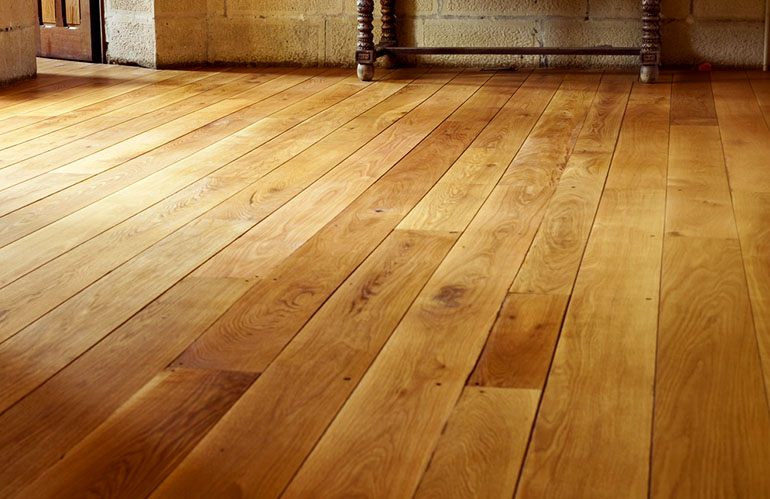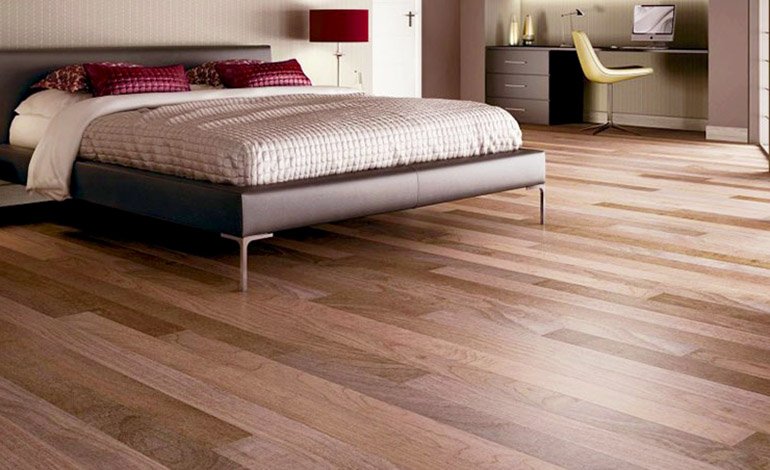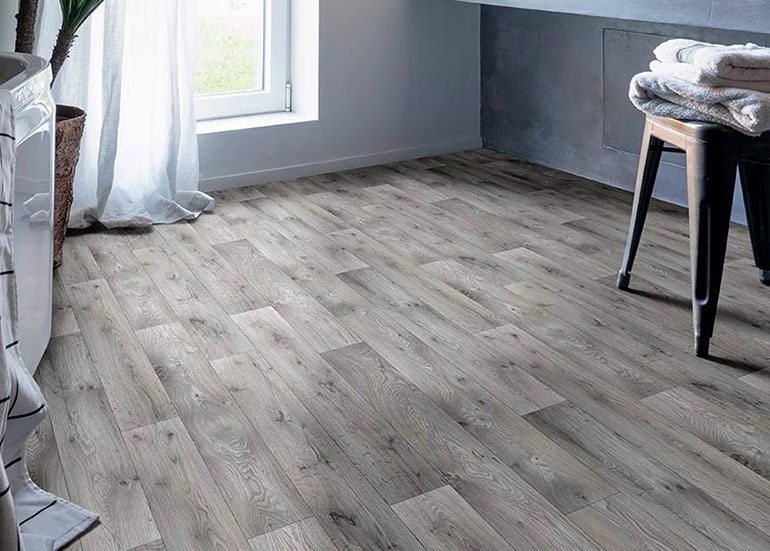
In the realm of home improvement, flooring is an integral component that significantly impacts the overall look and feel of a home. This is especially true in the United Kingdom, where the housing market is diverse and homeowners are constantly seeking ways to enhance their living spaces.
Flooring is not just about aesthetics, though. It plays a pivotal role in determining the longevity of a home’s interior.
Different types of flooring materials come with varying lifespans, and understanding these can greatly assist homeowners in making long-term decisions about their properties.
Whether it’s the classic appeal of hardwood, the cosy comfort of carpet, or the modern chic of laminate or vinyl, each flooring type offers a unique blend of style, durability, and maintenance needs.
The choice of flooring can significantly influence the maintenance requirements of a home.
Some flooring types, like hardwood, require regular polishing to maintain their lustre, while others, such as vinyl or laminate, are more resistant to wear and tear and require less upkeep.
This aspect is crucial for busy London homeowners who want to keep their homes looking pristine without spending excessive time on maintenance.
In this guide, we delve into the world of flooring types, examining their longevity and providing a detailed analysis of each.
At Resand.co.uk we aim to equip homeowners with the knowledge they need to make informed decisions about their flooring choices.
This exploration of flooring types and their longevity is more than just a guide—it’s a tool for homeowners to understand the long-term implications of their design choices.
1. Hardwood Flooring

Hardwood flooring, with its natural beauty and striking finish, has long been a favourite choice for discerning London homeowners.
Its enduring popularity is not only due to its aesthetic appeal but also its robustness and longevity. As stated by the National Wood Flooring Association, with the right care and attention, hardwood floors can continue to enhance a home’s value and appeal for over a hundred years.
It’s important to note that the lifespan of hardwood flooring is not a one-size-fits-all scenario. It can vary significantly depending on several factors.
The species of wood used plays a crucial role in determining the durability and, consequently, the longevity of the floor.
For instance, hardwoods like oak, maple, and cherry are renowned for their exceptional durability and resistance to wear and tear, making them excellent choices for high-traffic areas in the home.
The finish applied to the hardwood floor also significantly impacts its lifespan.
High-quality finishes protect the wood from damage, enhance its natural beauty, and extend its life.
Polyurethane finishes, for example, provide a hard, durable layer of protection that can withstand heavy foot traffic and resist scratches and stains.
The popularity of hardwood flooring among London homeowners is not waning. In fact, it’s quite the opposite.
A 2022 study by the UK Flooring Market Report revealed that hardwood flooring made up a substantial 35% of the total flooring market in London.
This statistic underscores the enduring appeal of hardwood flooring and its reputation as a long-lasting, value-adding feature in homes.
The environmental sustainability of hardwood flooring is another factor contributing to its popularity.
Many homeowners are now more conscious of their environmental footprint and are choosing hardwood flooring because it’s a natural, renewable resource.
Plus, old hardwood floors can be refinished rather than replaced, reducing the need for new materials and contributing to a more sustainable home.
Here are 3 subtypes of wooden flooring to consider:
1.1 Engineered Wood Flooring

Engineered wood flooring is a popular alternative to solid hardwood. It consists of a top layer of real wood bonded to multiple layers of plywood or fibreboard.
This construction makes it more stable and less susceptible to changes in temperature and humidity, extending its lifespan.
With proper care, engineered wood flooring can last between 20 to 30 years.
1.2 Bamboo Flooring

Bamboo flooring is an eco-friendly option that offers a unique aesthetic appeal. It’s known for its strength and durability, often compared to traditional hardwood flooring like oak, maple, or cherry for example.
However, its lifespan can vary significantly depending on the quality of the material and finish, typically ranging from 20 to 25 years.
1.3 Cork Flooring

Cork flooring is another sustainable choice that provides a soft, cushiony feel underfoot. It’s resistant to cracks, abrasions, and water, making it a durable option.
It may not be as long-lasting as classical hardwood or tile, with a typical lifespan of 10 to 30 years depending on maintenance.
2. Carpet Flooring

Carpet flooring, with its plush texture and inviting warmth, has long been a favourite for homeowners seeking comfort and a touch of luxury.
Particularly in the cooler climate of London, the cosy feel of carpet underfoot is a welcome feature in bedrooms and living rooms, where relaxation and comfort are paramount.
The longevity of carpet flooring, however, is typically less than that of hardwood. A high-quality carpet can serve a household well for approximately 10 to 15 years.
This lifespan can be extended with regular and thorough maintenance, including professional cleaning and immediate stain removal.
Despite this, the lifespan of carpet flooring is still considerably shorter than many other flooring options, which can often last for several decades.
The Carpet Foundation’s report in 2022 showed that around 22% of London homes opted for carpet flooring. This represents a slight decrease from previous years. One possible explanation for this trend could be the relatively shorter lifespan of carpet flooring and its higher maintenance needs compared to other flooring types.
Carpets, for instance, require regular vacuuming and occasional deep cleaning to maintain their appearance and hygiene. They are also more susceptible to stains and wear and tear from pets or high foot traffic.
The trend towards open-plan living and modern, minimalist aesthetics could also be influencing this shift away from carpet.
These styles often favour the sleek lines and easy maintenance of hardwood or laminate flooring.
3. Laminate Flooring

Laminate flooring has emerged as a popular choice among homeowners in London and across the United Kingdom, primarily due to its cost-effectiveness and aesthetic appeal.
It is an excellent alternative to hardwood flooring, offering a similar look and feel at a fraction of the cost.
This type of flooring is constructed with a photographic applique layer, which can mimic a variety of materials, including wood, stone, and ceramic, under a clear protective layer. The protective layer enhances the durability of laminate flooring, making it a practical choice for high-traffic areas.
One of the key advantages of laminate flooring is its longevity.
While it may not last as long as hardwood, which can endure for over a century with proper care, laminate flooring typically boasts a lifespan of 15 to 25 years.
This lifespan can be extended with proper maintenance, such as regular cleaning of the floor and avoiding excessive moisture.
Laminate flooring can withstand scratches, making it an ideal choice for homes with pets.
The popularity of laminate flooring is reflected in its market share.
According to the UK Flooring Market Report, laminate flooring accounted for 28% of the total flooring market in London in 2022. This significant market share can be attributed to its many benefits, including affordability, durability, and aesthetic versatility.
The installation process of laminate flooring is relatively straightforward, often allowing for a quicker and less disruptive installation compared to other flooring types.
Easy installation, combined with its low maintenance requirements, makes laminate flooring a convenient choice for many homeowners.
4. Tile Flooring

Tile flooring, encompassing both ceramic and porcelain varieties, stands as a robust and enduring choice for homeowners.
Its durability makes it particularly suitable for areas in the home that frequently come into contact with water, such as bathrooms and kitchens.
With the right care and maintenance, tile flooring can serve a household for up to 50 years or more, making it a long-term investment for many London homeowners.
The inherent properties of tile flooring contribute to its longevity. Ceramic and porcelain tiles are manufactured at high temperatures, making them resistant to moisture, stains, and wear and tear.
They are also easy to clean, requiring only regular sweeping and occasional mopping, further adding to their appeal for busy households.
In terms of design, tile flooring offers a wide range of options.
From the classic white and black tiles to more intricate designs and patterns, homeowners can choose from a plethora of styles to suit their interior décor. This flexibility allows tile flooring to cater to a variety of aesthetic preferences, from traditional to contemporary.
The UK Tile Association’s report in 2022 highlighted a steady growth in the tile flooring market.
In London, tile flooring held a 15% market share, indicating its steady popularity among homeowners in the region. The growth can be attributed to the increasing recognition of tile flooring’s durability, ease of maintenance, and design versatility.
It’s important to note that the installation process of tile flooring can be complex and requires professional expertise. Improper installation can lead to issues such as cracking or loosening of tiles, which can significantly reduce the lifespan of the floor.
5. Natural Stone Flooring

Natural stone flooring is a category that encompasses a variety of materials, each with its unique characteristics and charm. Granite, marble, and slate are among the most popular choices, offering a blend of durability, longevity, and a distinctive aesthetic that can elevate any space.
Granite, known for its hardness and resistance to scratches, is an excellent choice for high-traffic areas. It can withstand the hustle and bustle of busy London households without losing its shine.
With a lifespan that can extend beyond 100 years with proper care, granite flooring is a long-term investment that adds value to your home.
Marble, on the other hand, is synonymous with luxury and elegance. Its unique veining and availability in various colours make it a versatile choice for any interior design style.
While marble requires more maintenance than granite, including regular sealing to prevent stains, its lifespan can also span several decades, making it a worthwhile consideration for homeowners seeking a touch of opulence.
Slate is another robust natural stone flooring option. Known for its natural cleft surface and rich colour variations, slate flooring can add a rustic charm to your home.
It’s highly resistant to moisture, making it an excellent choice for kitchens, bathrooms, and entryways. Like its counterparts, slate can last for many decades with appropriate care.
6. Vinyl Flooring

Vinyl flooring, a popular choice among homeowners in London and across the United Kingdom, is renowned for its resilience and versatility.
This type of flooring is particularly known for its resistance to moisture, making it an excellent choice for areas in the home that are prone to dampness or water exposure, such as kitchens, bathrooms, and basements.
One of the key advantages of vinyl flooring is its easy maintenance.
Unlike other flooring types that may require regular sealing or special cleaning products, vinyl flooring can be kept in top condition with simple routine cleaning. Sweeping or vacuuming can remove loose debris, while occasional mopping with a mild cleaning solution can keep the floor looking fresh and new.
The longevity of vinyl flooring is another notable feature. With proper care and maintenance, vinyl flooring can last between 10 to 20 years. This lifespan can vary depending on the quality of the vinyl used, with higher-end luxury vinyl tiles or planks often offering greater durability.
In terms of market share, vinyl flooring is holding its own in the competitive London flooring market.
According to the UK Flooring Market Report, vinyl flooring accounted for approximately 18% of the total flooring market in London in 2022. This figure is a testament to the growing popularity of vinyl flooring among London homeowners, who value its combination of durability, easy maintenance, and aesthetic versatility.
Vinyl flooring comes in a wide range of styles, colours, and patterns, including options that mimic the look of natural stone or hardwood.
The vinyl allows homeowners to achieve a desired aesthetic without sacrificing practicality.
The advances in manufacturing technology have led to the development of luxury vinyl flooring options that offer even greater realism and durability.
Flooring Types – What’s Your Choice
Choosing the right flooring type is a significant decision for homeowners in London and across the UK.
While hardwood flooring offers unmatched longevity, other options like laminate, tile, and vinyl provide durability with lower maintenance requirements. Carpet, while not as long-lasting, offers a unique comfort and warmth.
As the flooring market continues to evolve, homeowners have a wide array of options to choose from, each with its own benefits and lifespan.
By considering these factors, homeowners can select a flooring type that best suits their lifestyle, aesthetic preferences, and longevity needs.
Remember, the longevity of your flooring also heavily depends on the quality of installation.
At Resand.co.uk, we pride ourselves on providing top-notch flooring renovation services in London, ensuring your chosen flooring type stands the test of time. Call us now!

Lily Edwards is a dedicated blog author for ReSand.co.uk, using her background in Interior Design to write insightful articles on floor care, including sanding, oiling, and polishing.
When she's not crafting informative blog posts, Lily enjoys exploring the British countryside, antique hunting, and indulging her love for DIY home improvement projects.
